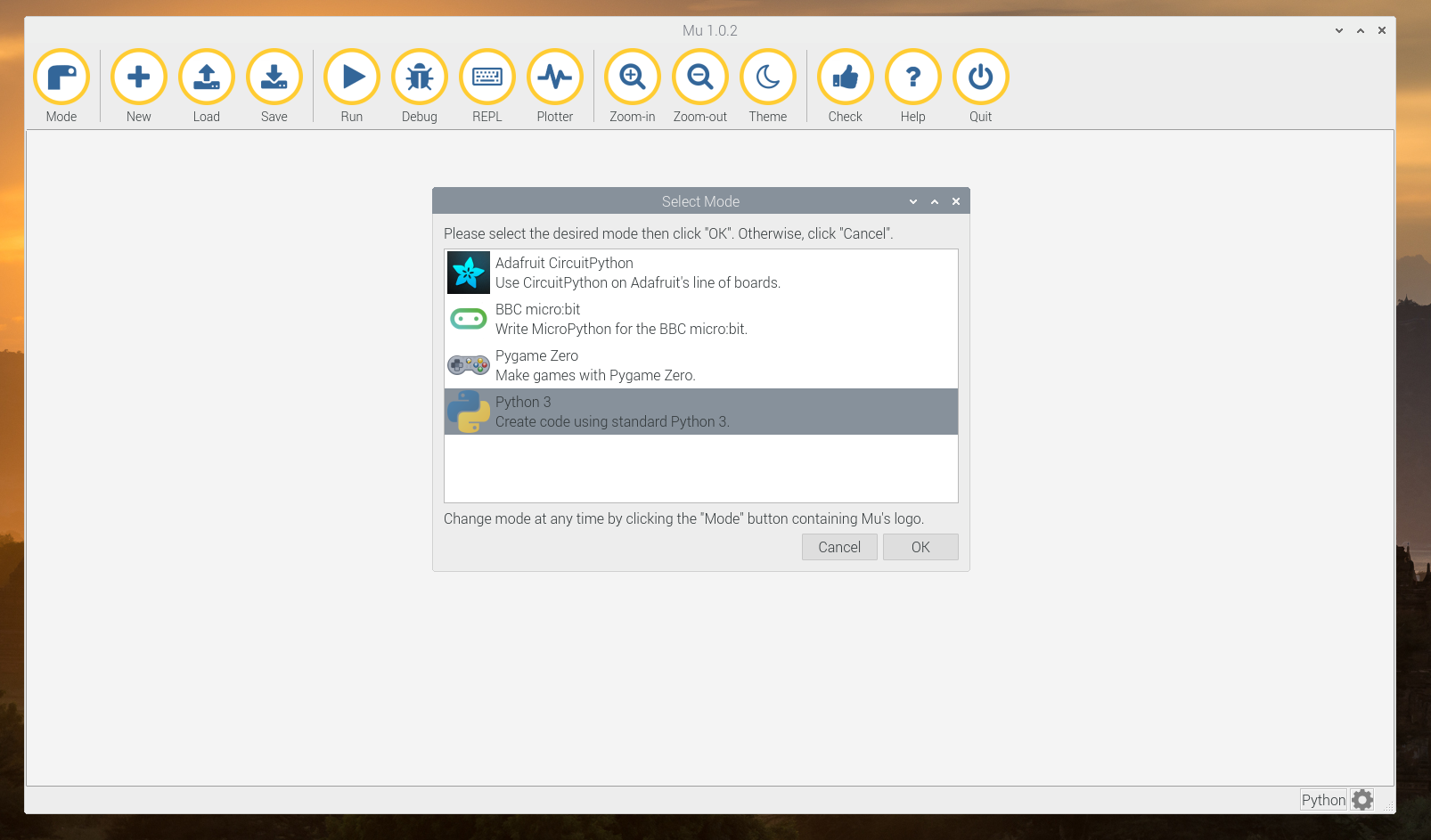

- #HOW TO WRITE C CODE IN RASPBERRY PI INSTALL#
- #HOW TO WRITE C CODE IN RASPBERRY PI UPDATE#
- #HOW TO WRITE C CODE IN RASPBERRY PI DRIVER#
- #HOW TO WRITE C CODE IN RASPBERRY PI PC#
- #HOW TO WRITE C CODE IN RASPBERRY PI FREE#
#HOW TO WRITE C CODE IN RASPBERRY PI PC#
This board has the basic functions of PC and Raspberry Pi integrates Wi-Fi, Bluetooth, and a large number of GPIO, and is widely used in teaching, family entertainment, IoT, etc. This board provides USB interfaces and Ethernet interfaces can connect the keyboard, mouse, and networking cable. Press 'enter' to start.Raspberry Pi is a small single-board computer based on ARM and developed by the Raspberry Pi Foundation in the United Kingdom. Wait for user to press 'enter' to continue Navigate into that lib folder (you might need to change the location depending on where you have your Raspberry Pi Pico projects stored) and clone the no-OS-FatFS-SD-SPI-RPi-Pico project from GitHub user carlk3. Open a command prompt with git access (e.g. Create a new folder named lib inside the new project folder. Delete the build directory inside the newly created project folder. Create a copy of the blink directory you created in the C/C++ setup guide. We will use that Blink program as a template for this project. If you have not done so already, follow this guide to set up the C/C++ SDK for Pico on your computer and create a Blink program. You should see the contents of the file printed out in the shell.

Make sure you have the SD card inserted into the breakout board and click the Run button. If you wish, save the program as a file on your computer for safekeeping (e.g. With open("/sd/test01.txt", "r") as file: # Open the file we just created and read from it With open("/sd/test01.txt", "w") as file: # Create a file and write something to it # Intialize SPI peripheral (start with 1 MHz) # Assign chip select (CS) pin (and start it high) In a new new document, enter the following code: Save the program as sdcard.py in that lib folder. Choose to save the file on the Pico device. Copy the code into a new document in Thonny.
#HOW TO WRITE C CODE IN RASPBERRY PI DRIVER#
Head to the official MicroPython sdcard driver here. We need to include the sdcard.py driver in order to communicate with the SD card over SPI. Close the pop-up windows when installation is done.
#HOW TO WRITE C CODE IN RASPBERRY PI INSTALL#
Note that you will need MicroPython v1.15 (or later) to support FATFS.Ĭlick Install to install the latest MicroPython firmware.
#HOW TO WRITE C CODE IN RASPBERRY PI UPDATE#
In the pop-up window, select Install or update firmware. Click again and select Configure Interpreter. If you do not already have the MicroPython firmware running on the Pico, click on the bottom-right button and select the Raspberry Pi Pico as your board. This will force the Pico to enumerate as a mass storage device on your computer, and you should see a drive appear on your computer with the name “RPI-RP2.” Press and hold the BOOTSEL button, and plug the USB cable back in. Whenever this guide tells you to put your Pico into “bootloader mode,” you will need to unplug the USB cable. Just make sure that you choose “FAT32” as the filesystem type:

Here is how you can format the SD card on each of the operating systems.
#HOW TO WRITE C CODE IN RASPBERRY PI FREE#
Feel free to try increasing this value later, once you know everything works. I recommend starting with a small block size, such as 512 or 1024 bytes. Insert the SD card into your computer (using an SD port on a laptop or something like a USB SD card reader). We will need to use the FAT32 filesystem on the SD card in order to read and write files. Here is how I connected the microSD card breakout board to the Pico: You can also view this tutorial in video form:Ĭonnect the sensor to the Pico as follows: In this tutorial, we’ll walk you through the process of connecting an SD card to the Raspberry Pi Pico and writing to files using MicroPython and the C/C++ SDK. SPI mode is great when you’re only writing short messages to a file (e.g. While transfer rates are slower, we can use fewer pins and rely on easier-to-use SPI peripherals and libraries. However, we can also use SD cards in a much simpler SPI mode. The most recent version of SD bus mode (UHS-III, not the PCIe lanes of Ex mode) are capable of reaching transfer speeds up to 624 MB/s. You can read more about SD bus mode here. The most common is the SD bus mode protocol, which uses a 4-bit wide bus to send and receive data. SD cards support a variety of communication protocols. The smaller microSD format is perfect for storing event timestamps and sensor logs from a microcontroller project that can be read on a computer. Secure Digital (SD) is a removable flash memory card format originally developed for consumer electronics, such as cameras and MP3 players.


 0 kommentar(er)
0 kommentar(er)
